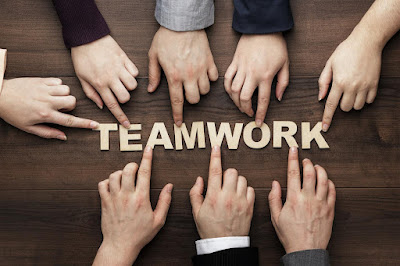Lean Tip #3436 – Articulate and Communicate
Goals Clearly
A great
example of setting work goals is being able to communicate them to the team in
an effective way. Often, ideas and professional goals may make perfect sense in
the mind but when it’s time to share them with the team, it could be incoherent
and incomplete.
The
professional skills to articulate goals clearly requires leaders to have
exceptional communication skills. Before sharing professional goals with the
team, make sure it answers the following questions:
- What? (The actual goal)
- Why? (You want to achieve this
professional goal because …)
- Which? (Resources and skills that I need
…)
- Who? (Who will do the work? The team)
- When? (Timeline/deadline for the goal)
- How? (Steps/plan to achieve it)
Answering
these questions is a great way to ensure that the goals you have in mind are as
ready as they can be in their draft version, before sharing them and improving
them with your team.
Lean Tip #3437 – Make Goal-Setting a Team
Exercise
The
difference between a good leader and a great leader is that the former sets
work goals for their team whereas the latter sets goals with their team.
Team
leaders that include team members in the process have a lot more to learn and a
higher probability of succeeding.
The
reasoning is simple. Open conversations with your team create a constant
feedback loop, refining the outcome every time. This can strengthen the
communication channel between you and your team and make them feel included and
understand how their work contributes towards the overarching goals.
Lean Tip
#3438 – Clearly Define Success.
Determine clear
success criteria for your priority so you know what it looks like to
achieve the goal. If your goal is a business one, ensure your expectations of
success are aligned with everyone on the team. Everyone needs to agree on when
we reach the goal to ensure that we are achieving success. We use a simple
Red-Yellow-Green method to set clear success criteria:
- Red = Failure or unacceptable performance
on the priority
- Yellow = Between Red and Green
- Green = Successful completion of the goal
- Super Green = Stretch goal
Lean Tip
#3439 – Change Your environment to Meet Your Goals
In order
to reach some goals that you have, change your habits. If you have
organizational goals, then one of the first places you can start is by
organizing your office and making sure that everything is ready to use.
Even some
of your professional development goals can be tied to regular daily habits. For
example, if you would like to increase employee engagement and team
collaboration within your organization, you might have to start by simply
thanking people for the work that they do.
Lean Tip
#3440 – Redefine Your Goals When You Fall Short
Every
single person on this earth has failed at some point in their life. What really
matters is not when you fail, but what you do to affect change in your life.
Ultimately, you have two choices: 1. You sulk when you don’t reach her goal, or
2. You pick yourself up and try again.
Lean Tip
#3441 – Educate & Emphasize the Importance of Kaizen
Educate
on the meaning of kaizen and emphasize a personal understanding of the
philosophy of kaizen across all levels of the company. Building a company
culture with a steady focus on improvement is critical to maintaining momentum
in your kaizen efforts.
Lean Tip
#3442 – Empower Your Employees in the Gemba
Employees
who are closest to the problems in your operations are the best-equipped to
solve them. They are your greatest assets in your kaizen efforts, so give them
the support they need to implement improvements. Developing your team’s
abilities through training and support should be as much a part of your
continuous improvement program as making improvements to manufacturing
processes.
Lean Tip
#3443 – Document Your Process and Performance Before and After Improvements Have
Been Implemented
In order
to evaluate improvements objectively, existing procedures must be standardized
and documented. Mapping the process’s initial state can help you identify
wastes and areas for improvement and provide a benchmark for improvement.
Lean Tip
#3444 – Standardize Work for Improvement to Last
In order
for improvements to last, they must be standardized and repeatable.
Standardizing work is crucial to kaizen because it creates a baseline for
improvement. When you make improvements to a process, it’s essential to
document the new standard work in order to sustain the improvements and create
a new baseline. Standard work also reduces variability in processes and
promotes discipline, which is essential for continuous improvement efforts to
take root.
Lean Tip
#3445 – Create Your Own Kaizen Guidelines
Reflecting
on your kaizen efforts after improvements have been implemented is an important
part of the continuous improvement cycle. As you reflect on your efforts,
develop your own kaizen guidelines. Start by creating guidelines based on your
own experiences improving the workplace. Keep in mind that these guidelines
should be for your colleagues, your successors, and yourself to understand the
problems you have overcome. These guidelines will ultimately help you as you
approach your next challenge.
Lean Tip
#3446 – Encourage Leadership to be Open-Minded
Continuous
improvement works especially well when individuals are encouraged by senior
leaders. Prepare your leadership team by offering special training to encourage
new ideas and removing any blockers that may be in a team member's path as they
are trying to improve a workflow.
Lean Tip
#3447 – Don’t Make Perfection the Goal
One of
the hardest parts of using the continuous improvement model is the desire to
strive toward perfection. This is an impossible feat, and the philosophy behind
kaizen is to make small changes to be better than you were the day before.
Focusing on perfection can lead your team to make changes that aren’t actually
necessary.
Lean Tip
#3448 – Troubleshoot in Real Time
One of
the most useful concepts in continuous improvement is the encouragement to
confront problems head-on in an effort to solve it faster. If an issue becomes
apparent fix it immediately instead of searching for the “perfect” solution.
Waiting
will inevitably cost time and valuable resources. Instead, on-the-spot
troubleshooting allows production to continue while the new, improvised
solution can be analyzed using continuous improvement techniques. You might
find that what was first a temporary fix could lead to permanent positive
changes.
Lean Tip
#3449 – The Rule of 1% Improvement
Improvement
is a never-ending process. There’s always something that can be improved, and
there are many ways of doing so.
The Rule
Of One Percent Improvement: The rule states if you improve just one per cent
each day then at least three hundred sixty five improvements will have been
made by your business by the end of the year. It’s about Marginal Gains and
it’s like compound interest but for business results.
This
means even small changes done consistently over time lead up to big results!
Transforming performance may seem like an impossible task but with kaizens, it
becomes much more manageable as we take continuous steps towards our goals
through our teams and our people.
Lean Tip
#3450 – Challenge the Status Quo
Throw out
all your old fixed ideas on how to do things. Replace “sacred cows,” personal
opinions, and “it’s the way we’ve always done it” with performance facts and
data. Numbers are the language of improvement. Avoid the emotional traps of
blaming people or making excuses that prevent you from discovering the real
problem. Once you have established the new best-way of doing something, stick
with it until a better way is found.







